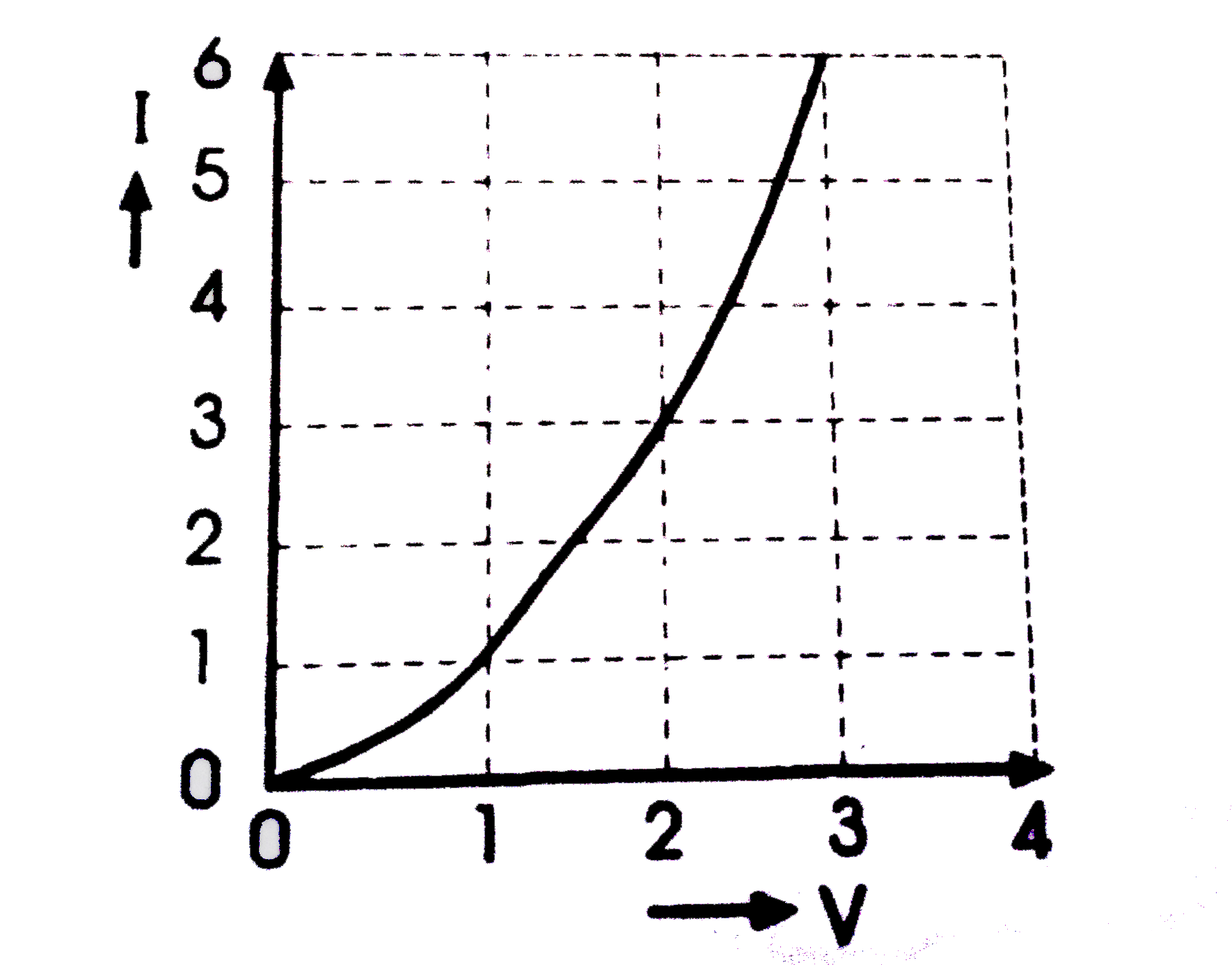(a) Six lead-acid type of secondary cells each of emf 2.0 V and internal resistance 0.015 Ω are joined in series to provide a supply to a resistance of 8.5 Ω. What are the current drawn from the supply and its terminal voltage ?
(b) A secondary cell after long use has an emf of 1.9 V and a large internal resistance of 380 Ω . What maximum current can be drawn from the cell ? Could the cell drive the starting motor of a car?
(a) Here emf of each cell ε= 2.0 V, internal resistance of each cell r = 0.015 Ω Number of cells n= 6 and external resistance R = 8.5 Ω
∴ In series arrangement total emf εeq=nε=6×2.0=12V and total internal resistance req=nr=6x0.015=0.09Ω
Current drawn from the supply I=εeqR+req=128.5+0.09=128.59=1.4A
∴ Terminal voltage V=εeq−Ireq=12−1.4×(0.09)=11.9V
(b) Here emf ε. = 1.9 V, internal resistance r.=380Ω Maximum current which may be drawn from the cell
I.=ε.r.=1.9380=0.005A
As this current is extremely small, it cannot be used to drive the starting motor of a car.
Topper's Solved these Questions
- CURRENT ELECTRICITY BOOK - U-LIKE SERIESCHAPTER - CURRENT ELECTRICITY EXERCISE - CASE BASED/SOURCE-BASED INTEGRATED QUESTIONS
10 Videos
- CURRENT ELECTRICITY BOOK - U-LIKE SERIESCHAPTER - CURRENT ELECTRICITY EXERCISE - MULTIPLE CHOICE QUESTIONS
35 Videos
- CURRENT ELECTRICITY BOOK - U-LIKE SERIESCHAPTER - CURRENT ELECTRICITY EXERCISE - SELF ASSESSMENT TEST (SECTION C )
3 Videos
- CBSE SAMPLE QUESTION PAPER 2019-20 (SOLVED)BOOK - U-LIKE SERIESCHAPTER - CBSE SAMPLE QUESTION PAPER 2019-20 (SOLVED)EXERCISE - SECTION D
6 Videos
- DUAL NATURE OF RADIATION AND MATTERBOOK - U-LIKE SERIESCHAPTER - DUAL NATURE OF RADIATION AND MATTEREXERCISE - SELF ASSESSMENT TEST SECTION-C (VERY SHORT ANSWER QUESTIONS)
3 Videos
Similar Questions
(a) Six lead-acid type of secondary cells, each of emf 2.0 V and internal resistance 0.015Ω are joined in series to provide a supply to a resistance of 8.5Ω. What are the currents drawn from the supply, and its terminal voltage?
(b) A secondary cell after long use has an emf 1.9 V and a large internal resistance of 380Ω. What maximum current can be drawn from the cell? Could the cell drive the starting motor of a car?
View Solution(a) Six lead-acid type of secondary cells each of emf 2−0 V and internal resistance 0−015Ω are jouned in series to provide a supply to a resistance of 8−5Ω. What are the current drawn from the supply and its terminal voltage ?
(b) A secondary cells after long use has an emf of 1−9 V and a large internal resistance of 380Ω. What maximum current can be drawn from the cell ? Could the cell drive the starting motor of a car ?
View Solution
Knowledge Check
A cell of emf 2.0 V and internal resistance 0.1 Ω is connected with a resistance of 3.9Ω. The voltage across the cell terminals will be
A0.50 VB1.90 VC1.95 VD2.0 VA cell of emf 2 V and internal resistance 0.1Ω is connected with a resistance of 3.9Ω The voltage across the cell terminal will be
A1.95VB1.90VC0.50VD2.00VThe cell has an emf of 2V and the internal resistance of this cell is 0.1Ω, it is connected to resistance of 3.9Ω, the voltage across the cell will be
A1.95VB1.90VC0.50VD2.00V
Siix lead-acid type of secondary cells, each of emf 2.0 V and internal resistancce 0.015Ω are joined in series to provide a supply to a resistance of 8.5Ω. Determine : (i) the current draw from the fupply and (ii) its terminal voltage.
View SolutionSiix lead-acid type of secondary cells, each of emf 2.0 V and internal resistancce 0.015Ω are joined in series to provide a supply to a resistance of 8.5Ω. Determine : (i) the current draw from the fupply and (ii) its terminal voltage.
View SolutionA cell emf 3V and internal resistance 0.75Ω is connected to a nonlinear conductor whose V-I g raph is shown in figure obtain graphically the current drawn from the cell and its terminal voltage.

View SolutionA cell emf 3V and internal resistance 0.75Ω is connected to a nonlinear conductor whose V-I g raph is shown in figure obtain graphically the current drawn from the cell and its terminal voltage.

View SolutionA battery of emf 8 V with internal resistance 0.5Ω is being charged by a 120 V dc supply using a series resistance of 15.5Ω. The terminal voltage of the battery is
View Solution
